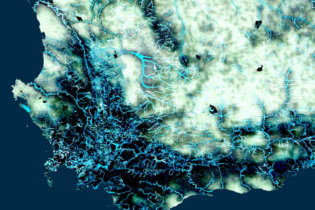Many of South Africa’s natural water sources have been adversely affected by some human influence.
Whether contamination from domestic waste, commercial ventures, industry and/or agricultural practices, all manner of pollutants are entering our surface and groundwater supplies, many of which are extremely harmful to both people and the environment. In Africa, there is the additional pressure of contamination from rapidly expanding informal settlements, with high poverty levels and inadequate sanitation systems and infrastructure. Overpopulation in rural catchment areas and the use of streams and rivers for human cleansing further aggravates the problem. Considering groundwater provides 60 to 90% of the country’s domestic water supply, such localised pressures are a major concern for the safety and quality of water in South Africa. Drinking water requires substantial treatment before use and consumption, and measuring and monitoring of water quality has become essential to human and environmental health. The methods applied vary extensively depending on the water’s origin and intended purpose. The parameters for drinking water quality typically fall into two categories: chemical or physical and microbiological, the recommended levels of which are stipulated by the South African National Standard, SANS 241:2006. This standard is the definitive reference on acceptable limits for drinking water quality with guideline levels for a range of water quality characteristics comparable to international drinking water quality standards. Chemical/physical parameters include heavy metals, trace organic compounds, total suspended solids (TSS) and turbidity. Microbiological parameters include Coliform bacteria, E. coli, and specific pathogenic species of bacteria (such as cholera-causing Vibrio cholerae), viruses, and protozoan parasites (those most common for causing diarrhoeal disease in humans). Chemical parameters tend to pose more of a chronic health risk through build-up of heavy metals although some components like nitrates/nitrites and arsenic may have a more immediate impact. Physical parameters largely affect the aesthetics and taste of the drinking water and may complicate the removal of microbial pathogens. The responsibility of ensuring that drinking water meets the legislated ‘fit for human consumption’ quality criteria rests with local authorities and water services institutions (local or district municipalities). Bulk water suppliers often have their own laboratories to test water while smaller agencies use commercial labs with specialist testing facilities and skills such as those at Talbot Laboratories.Talbot Laboratories, an independent environmental testing facility, is accredited by SANAS (South African National Accreditation Service) to the ISO 17025:2005 standard for various chemical and microbiological tests. SANAS gives formal recognition that test facilities are competent to carry out specific tasks to certify that water service providers meet the required criteria. The Talbot laboratory continues to successfully maintain this status through its consistently high standard of operation and quality management system.
Chemical and microbiological analyses such as those conducted at Talbot Laboratories test all types of water from potable to bottled, borehole, surface, ground, river and dam water. These analyses ensure that the samples submitted are suitably tested to the relevant SANS standards for the appropriate application. For drinking water testing, Talbot Laboratories provides a suite of analyses which encompasses testing to establish if a specific water source is suitable for human consumption, whether it meets appropriate standards for discharge to a natural water resource or as trade effluent to sewer, or is suitable for livestock watering or irrigation purposes. Additional water testing services include tests for bottled water and shelf life analysis. In addition to traditional water testing, the laboratory also specialises in testing wastewater and waste components. Such tests focus on soil/sludge analysis, waste analysis and classification (as per DEA requirements) and sewage sludge characterisation. A water source sampling service by field samplers is also available to assist in the correct collection of samples for further testing at the laboratory. Expert analysis and interpretation of results by a team of competent and dedicated quality, technical, customer care and sales staff provides essential information for identifying possible environmental contamination or pollution. Talbot Laboratories is equipped to provide a rapid, reliable and accurate service in environmental testing.






